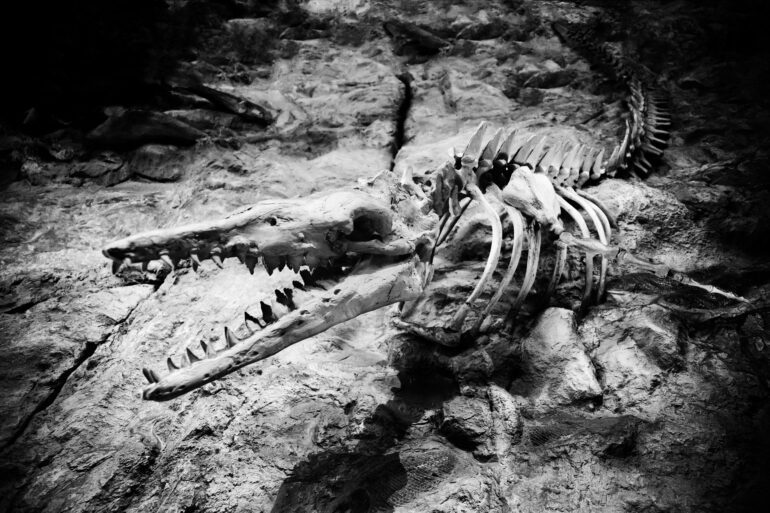TL;DR:
- Flinders University scientists are utilizing machine learning to detect species interactions and predict potential extinctions.
- Co-extinctions occur when the decline of one species leads to the extinction of another, while invasive predators pose a threat to vulnerable native prey species.
- Machine learning algorithms can accurately forecast predator-prey dynamics by analyzing species traits and their interactions.
- This method fills knowledge gaps in species interactions, including undocumented interactions, extinct species interactions, and invasive species introductions.
- Understanding species interactions is crucial for predicting and preventing future extinctions, especially in the face of climate change and habitat disruption.
- AI’s ability to anticipate ecological dynamics empowers proactive conservation planning and intervention.
Main AI News:
The realm of artificial intelligence (AI) expands far beyond predicting our movie preferences or selecting our favorite tunes. In fact, cutting-edge algorithms have now proven capable of forecasting the intricate web of interactions between species, shedding light on the looming threat of extinction cascades. At Flinders University’s Global Ecology Lab, a team of dedicated scientists is spearheading this groundbreaking research, employing the power of machine learning to detect species interactions and proactively plan interventions to avert ecological disasters.
Dr. John Llewelyn, a distinguished Research Fellow at Flinders University’s College of Science and Engineering, emphasizes the gravity of the current ecological emergency. Climate change, invasive species, habitat degradation, and human-induced actions have triggered a distressing surge in extinctions. However, one of the lesser-known culprits behind this crisis is the intricate dance between predator and prey. Dr. Llewelyn’s team has made a remarkable discovery—machine learning holds the key to anticipating the dynamics of predator-prey relationships within interconnected ecosystems.
Unearthing the Hidden Perils: Co-Extinctions and Invasive Predators
Co-extinctions, as Dr. Llewelyn clarifies, occur when the decline or disappearance of one species leads to the extinction of another. Take, for instance, the predator-prey relationship. When a predator loses its prey, the consequences can be dire—ultimately resulting in the predator’s own demise. On the other hand, invasive predators like cats, foxes, and brown tree snakes pose a unique threat. Their introduction to a new ecosystem can spell disaster for native prey species ill-equipped to cope with such novel adversaries.
To predict and prevent such future extinctions, Dr. Llewelyn underscores the significance of understanding species interactions. However, he points out a critical roadblock: our knowledge is currently limited to a mere fraction of the existing and potential interactions, particularly concerning invasive species. This knowledge gap severely impedes our ability to accurately forecast extinctions—a challenge that urgently calls for innovative solutions.
Unlocking Nature’s Secrets: Machine Learning Comes to the Rescue
In their recent study, the Flinders University research team has harnessed the power of machine learning to bridge this knowledge gap. By leveraging species’ characteristics, AI algorithms can accurately predict predator-prey interactions in birds and mammals. The process is as ingenious as it is effective—the algorithm learns the correlations between species traits and their interactions by analyzing comprehensive data on interacting and non-interacting species. Armed with this knowledge, it can then predict interactions among species, offering a glimpse into the complex tapestry of ecological relationships.
Dr. Llewelyn enthusiastically highlights the potential of this method to fill the gaps in our understanding of species interactions. Whether it’s unraveling the undocumented interactions currently unfolding, deciphering interactions between long-extinct species, or predicting interactions involving invasive species in new habitats, machine learning is an invaluable tool. With each prediction, we inch closer to comprehending the intricate mechanisms that drive extinctions.
Preserving Biodiversity: A Profound Responsibility
Species interactions lie at the heart of ecological systems, shaping the delicate balance that sustains life on Earth. However, the availability of comprehensive data on these interactions remains alarmingly scarce across most ecological communities. This data deficit significantly hampers our ability to accurately predict the functioning of ecosystems and their response to disturbances.
Dr. Llewelyn stresses that, as human beings, we are intrinsically intertwined with biodiversity and thriving ecosystems. Preserving this intricate web of life is not merely an ethical imperative; it is also vital for our own well-being. The bountiful benefits that biodiversity bestows upon human societies—from clean air and water to food security and medicines—are immeasurable. By harnessing the power of AI to understand and protect species interactions, we embark on a journey towards safeguarding not just nature’s tapestry but our own future as well.
Conclusion:
The integration of AI and machine learning into conservation efforts represents a significant breakthrough in combating extinction cascades. By accurately predicting predator-prey interactions and identifying vulnerable species, proactive interventions can be planned and executed. This has profound implications for the market, as organizations and governments can leverage this technology to develop targeted conservation strategies, protect biodiversity, and ensure sustainable ecosystems. Additionally, businesses operating in industries reliant on biodiversity, such as pharmaceuticals or agriculture, can benefit from the preservation of ecosystems and the valuable resources they provide. Ultimately, AI-driven conservation holds immense potential to drive positive environmental impact and foster a more sustainable future.

